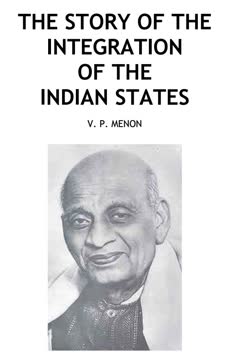Key Takeaways
1. British Paramountcy Shaped Princely India
No greater achievement can be credited to the British than that they brought about India's enduring political consolidation.
Evolution of Control. The British East India Company, initially focused on trade, gradually expanded its influence through subsidiary alliances and military conquests, establishing paramountcy over Indian states. This system, while consolidating British power, also created a complex web of treaties and obligations that would later complicate the transfer of power.
Subsidiary Alliances. The system of subsidiary alliances, pioneered by Wellesley, required Indian rulers to cede territory, maintain British-led armies, and accept British Residents, effectively subordinating their foreign policy and internal security to the Company. This system, while ensuring British dominance, also fostered corruption and indolence among the rulers.
Doctrine of Lapse. The annexationist policies of Lord Dalhousie, particularly the Doctrine of Lapse, further eroded the autonomy of Indian states, leading to widespread discontent and contributing to the Great Revolt of 1857. The revolt prompted a shift in British policy towards preserving the states as "breakwaters" against future uprisings.
2. The Butler Committee Solidified the Divide
Thus was laid the foundation of a policy whereby, in later years, a wedge was to be effectively driven between the States and British India.
Committee's Mandate. Appointed in 1927, the Butler Committee was tasked with examining the relationship between the Indian States and the British Crown, aiming to address the rulers' concerns about their rights and privileges. However, it notably excluded representatives of the States' subjects from its proceedings.
Legal Sovereignty. The Committee's proceedings were dominated by legal arguments asserting the original sovereignty of the States, except for powers explicitly transferred to the Crown. This perspective emphasized a contractual relationship based on treaties, limiting the Crown's authority to matters of foreign affairs and security.
Paramountcy Undefined. Despite these arguments, the Butler Committee ultimately upheld the principle of paramountcy, asserting the Crown's right to adapt its relationship with the States according to changing circumstances. Crucially, it also suggested that the rulers should not be handed over to an Indian government responsible to an Indian legislature without their agreement, laying the groundwork for a future divide.
3. Federation Attempts Fail Amidst Rising Nationalism
The natural and legitimate aspirations of India cannot and will not be allowed to be defeated or checkmated by ingenious arguments which have no application to facts.
Round Table Conferences. The Round Table Conferences of the 1930s aimed to create an all-India federation, with both British India and the princely states participating. While some rulers initially expressed enthusiasm, divisions soon emerged over representation, financial liabilities, and the extent of federal control.
Government of India Act 1935. The Government of India Act of 1935 incorporated the idea of a federation, but made accession voluntary for the states, unlike the provinces. This disparity reflected the British desire to maintain the rulers' loyalty while accommodating nationalist demands in British India.
Rulers' Demands. The rulers, fearing a loss of sovereignty and financial autonomy, proposed numerous limitations on federal power, including the principle of status quo in fiscal matters. These demands, coupled with the opposition of major political parties in British India, ultimately doomed the federal scheme.
4. World War II Suspends Federalism, Intensifies State Agitation
On 11 September 1939, Lord Linlithgow announced in his address to both Houses of the Central Legislature that, while federation remained as before the objective of His Majesty's Government...we have no choice but to hold in suspense the work in connection with preparations for federation.
War Effort. With the outbreak of World War II, the federal scheme was put on hold, as the British government needed the support of the rulers in the war effort. This suspension, however, did not quell the rising tide of nationalism in British India or the growing agitation for responsible government within the states.
Congress Policy. The Congress, while initially adopting a policy of non-interference in the internal affairs of the states, gradually shifted its stance, offering moral support to the states' subjects agitating for civil liberties and responsible government. This shift reflected the growing recognition that the future of the states was inextricably linked to that of British India.
Linlithgow's Reforms. Lord Linlithgow, recognizing the need for reforms in the states, proposed administrative and constitutional changes, including limiting the privy purse and establishing representative institutions. However, these proposals met with resistance from the Political Department, which favored maintaining the status quo.
5. The Cabinet Mission Plan Offers Independence with Complex Choices
Whether or not an individual State elects to adhere to the constitution, it will be necessary to negotiate a revision of its treaty arrangements so far as this may be required in the new situation.
Cripps Mission. The Cripps Mission of 1942 offered a framework for India's future constitution, including the option for provinces and states to form separate unions. This proposal, while ultimately rejected, highlighted the complexities of integrating the states into a unified India.
Cabinet Mission Plan. The Cabinet Mission Plan of 1946 proposed a three-tier structure, with provinces grouped into sections and a central government with limited powers. The plan recognized the end of paramountcy and the need for the states to negotiate their future relationship with the successor governments.
States' Options. The Cabinet Mission Plan left the states with the choice of joining the Indian Union, forming a separate union, or entering into particular political arrangements with the successor governments. This ambiguity created uncertainty and fueled the ambitions of some rulers to assert their independence.
6. Lapse of Paramountcy Creates a Power Vacuum
The territories under the sovereignty of the Crown became at once as important and as integral a part of India as territories under its direct domination.
Queen Victoria's Proclamation. The Queen's Proclamation of 1858 marked a shift in British policy, promising to respect the rights, dignity, and honor of Native Princes. This commitment, however, was often undermined by the assertion of paramountcy, which allowed the Crown to intervene in the internal affairs of the states.
Crown Representative. The Government of India Act of 1935 created the office of Crown Representative, separate from the Governor-General, to handle relations with the states. This arrangement further emphasized the distinct status of the states and their direct relationship with the Crown.
End of Treaties. With the impending transfer of power, the British government announced its intention to terminate paramountcy, leaving the states free to negotiate their future. This decision created a power vacuum and raised the specter of fragmentation, as the states were no longer bound by their treaties with the Crown.
7. Accession and Standstill Agreements Bridge the Gap
We are all knit together by bonds of blood and feeling no less than of self interest. None can segregate us into segments; no impassable barriers can be set up between us.
States Department. Recognizing the urgency of the situation, Sardar Vallabhbhai Patel established the States Department in July 1947, with V. P. Menon as its secretary. The department's primary goal was to integrate the princely states into the Indian Union through persuasion and negotiation.
Instrument of Accession. The States Department devised the Instrument of Accession, a simple document that allowed the states to cede control over three key subjects: defense, external affairs, and communications. This approach addressed the immediate security concerns of the states while preserving their internal autonomy.
Standstill Agreements. To maintain continuity and prevent administrative chaos, the States Department also negotiated Standstill Agreements with the states, ensuring that existing arrangements on matters of common concern would continue until new agreements could be reached. These agreements provided a framework for cooperation and prevented a sudden disruption of essential services.
8. Integration of Orissa and Chhattisgarh States Sets a Precedent
The territories under the sovereignty of the Crown became at once as important and as integral a part of India as territories under its direct domination.
Geographical Context. The Orissa and Chhattisgarh States, characterized by dense forests and tribal populations, were economically and administratively backward, posing a challenge to the newly independent India. Their territories were also intertwined with the provinces of Orissa and the Central Provinces, creating administrative complexities.
Popular Agitation. The growing agitation for responsible government in these states, coupled with the rulers' limited capacity to address the people's needs, created a volatile situation. The Government of India, concerned about the potential for unrest and instability, began to consider intervention.
Merger Agreements. Sardar Patel, recognizing the need for a decisive solution, persuaded the rulers of the Orissa and Chhattisgarh States to sign merger agreements, ceding their territories to the provinces of Orissa and the Central Provinces. This marked a significant step towards the consolidation of India and set a precedent for future integration efforts.
9. Saurashtra Union Demonstrates Regional Consolidation
I am decidedly of the opinion that the tranquility, not to say security, of our vast oriental possessions is involved in the preservation of native principalities which are dependent on us for protection.
Kathiawar's Fragmentation. The Kathiawar peninsula, with its numerous small states and complex jurisdictions, presented a unique challenge to integration. The region's economic development was hampered by internal customs duties and the lack of coordinated administration.
Inspiration from Bhavnagar. The Maharajah of Bhavnagar's decision to grant responsible government and integrate his state with a larger entity served as a catalyst for change in Kathiawar. This act of statesmanship inspired other rulers to consider similar steps.
Formation of Saurashtra. Through skillful negotiation and persuasion, V. P. Menon convinced the rulers of Kathiawar to merge their states into a single, unified entity known as the Saurashtra Union. This marked a significant achievement in regional consolidation and paved the way for greater economic and political stability.
10. The Travancore-Cochin Union Marks a Southern Milestone
We shall respect the rights, dignity, and honour of Native Princes as our own; and we desire that they as well as our own subjects should enjoy that prosperity and that social advancement which can only be secured by internal peace and good government.
Geographical and Cultural Unity. Travancore and Cochin, two neighboring states in South India, shared a common language, culture, and history. However, regional rivalries and political differences had long prevented them from uniting.
Economic and Administrative Benefits. The integration of Travancore and Cochin offered significant economic and administrative advantages, including the elimination of inter-state transit duties and the coordinated development of resources. The union also addressed the issue of political representation for the Tamil-speaking minority in Travancore.
Devaswom Properties. A key challenge in the integration process was the management of Devaswom properties, which were extensive temple lands in both states. A compromise was reached, guaranteeing the continued maintenance of the temples and establishing Devaswom Boards to oversee their administration.
11. The States Department Navigates a Course Through Chaos
The territories under the sovereignty of the Crown became at once as important and as integral a part of India as territories under its direct domination.
Limited Timeframe. The States Department, under the leadership of Sardar Patel and V. P. Menon, faced the daunting task of integrating over 550 princely states within a matter of months. This required a combination of persuasion, negotiation, and, in some cases, decisive action.
Legal and Political Challenges. The department had to navigate a complex legal landscape, balancing the treaty rights of the rulers with the aspirations of the people and the overarching goal of national unity. The political climate was further complicated by communal tensions and the looming threat of partition.
Pragmatism and Flexibility. The States Department adopted a pragmatic and flexible approach, tailoring its strategies to the specific circumstances of each state. This involved offering incentives, addressing concerns, and, when necessary, exerting pressure to ensure a smooth and peaceful transition.
12. Hyderabad's Resistance Culminates in Police Action
The sovereigns of what are called independent States live in a state of abject dependence upon the will of the British agency at their various Courts.
Strategic Importance. Hyderabad, the largest and wealthiest princely state, occupied a strategic location in the heart of India. Its ruler, the Nizam, initially resisted accession, seeking to maintain his state's independence or even align with Pakistan.
Razakar Militancy. The rise of the Razakars, a militant organization led by Kasim Razvi, further destabilized the situation, as they terrorized the Hindu population and advocated for Hyderabad's secession. This internal conflict, coupled with border raids and economic disruptions, created an intolerable situation for the Government of India.
Operation Polo. After exhausting all peaceful options, the Government of India launched "Operation Polo" in September 1948, sending Indian troops into Hyderabad to restore order and enforce accession. The operation was swift and decisive, leading to the surrender of the Hyderabad forces and the integration of the state into the Indian Union.
Last updated:
FAQ
1. What is The Story of the Integration of the Indian States by V.P. Menon about?
- Comprehensive historical account: The book narrates the political, administrative, and financial integration of over 554 princely States into the Indian Union after independence (1947–1951).
- Insider’s perspective: V.P. Menon, a key official in the process, provides a firsthand account of the negotiations, challenges, and strategies involved.
- Focus on major events: It covers the background of the princely States, their relationship with the British Crown, and the step-by-step process of unification, including case studies of significant States like Hyderabad, Kashmir, and Rajasthan.
2. Why should I read The Story of the Integration of the Indian States by V.P. Menon?
- Unique insider insights: Menon was directly involved in the integration, offering unparalleled access to the political negotiations and administrative decisions.
- Understanding nation-building: The book explains how India’s unity was forged from a patchwork of diverse and often conflicting States, a crucial but underexplored chapter in Indian history.
- Lessons in leadership and diplomacy: It highlights the roles of key figures like Sardar Patel and Lord Mountbatten, and the delicate balancing of regional, communal, and political interests.
3. What are the key takeaways from The Story of the Integration of the Indian States by V.P. Menon?
- Bloodless revolution: The integration is described as a historic, largely peaceful transformation that unified a fragmented subcontinent.
- Complexity of the process: The book reveals the immense administrative, political, and financial challenges, requiring patience, strong leadership, and innovative solutions.
- Lasting impact: The integration laid the foundation for India’s political stability, federal structure, and democratic governance.
4. How did the British establish and maintain control over the Indian princely States, according to V.P. Menon?
- Subsidiary alliances: The British used treaties and alliances to control States indirectly, stationing troops and Residents while limiting rulers’ sovereignty.
- Doctrine of paramountcy: The British Crown claimed ultimate authority over succession, external affairs, and internal security, leaving rulers with limited autonomy.
- Political Department’s dominance: The Indian Political Service gradually overshadowed the rulers’ authority, managing relations and enforcing British interests.
5. What was the Instrument of Accession, and why was it significant in the integration process described by V.P. Menon?
- Legal framework for accession: The Instrument of Accession was a document by which a princely State ceded control over defense, external affairs, and communications to the Indian Dominion.
- Minimal initial commitment: It allowed States to retain autonomy in other matters, easing rulers’ fears of losing sovereignty.
- Foundation for unity: Signing the Instrument was crucial to prevent fragmentation and ensure India’s territorial integrity after independence.
6. What were the main challenges faced during the integration of the Indian States, as detailed in V.P. Menon’s book?
- Diverse interests and resistance: States varied in size, power, and political outlook, with some rulers eager to join India, others seeking independence or alignment with Pakistan.
- Administrative and territorial fragmentation: Many States were tiny, scattered, and interspersed, making governance and law enforcement difficult.
- Communal and political tensions: Partition, communal unrest, and disputes over sovereignty created additional pressures, especially in States like Junagadh, Hyderabad, and Kashmir.
7. How did Sardar Vallabhbhai Patel and other key leaders contribute to the integration process, according to V.P. Menon?
- Patel’s masterful leadership: Sardar Patel is portrayed as the architect of integration, using firmness, diplomacy, and personal rapport to persuade rulers.
- Collaboration with Mountbatten: Lord Mountbatten, as Governor-General, played a mediating role, seeking peaceful settlements and supporting Indian leaders.
- Team effort: The process relied on cooperation between central leaders, local administrators, and the rulers themselves, balancing firmness with fairness.
8. How were specific States like Junagadh, Hyderabad, and Jammu & Kashmir integrated into India, as described in The Story of the Integration of the Indian States?
- Junagadh’s crisis and referendum: The Nawab’s accession to Pakistan led to diplomatic efforts, a provisional government, and a referendum, resulting in Junagadh joining India.
- Hyderabad’s resistance and Operation Polo: The Nizam’s refusal to accede led to communal violence and, ultimately, a swift military operation (Operation Polo) that brought Hyderabad into the Union.
- Kashmir’s invasion and accession: Facing invasion from Pakistan-backed forces, the Maharajah acceded to India, prompting military intervention and ongoing political complexities.
9. What was the role and significance of the Privy Purse in the integration of Indian States, according to V.P. Menon?
- Compensation for rulers: The Privy Purse was a financial settlement granted to rulers in exchange for surrendering their powers and States.
- Formulas and fairness: Different formulas were used to determine amounts, balancing State revenues and the need for political stability.
- Controversy and commitment: While later criticized, Menon argues the Privy Purse was a moral and practical necessity to ensure a smooth transition and honor commitments.
10. How did the process of “organic unification” and the creation of Unions of States work, as explained in V.P. Menon’s book?
- Merging sovereignties: Multiple small States were merged into larger administrative units (Unions) with common executives, legislatures, and judiciaries.
- Legal and political consolidation: New covenants and Instruments of Accession extended central legislative powers and established Rajpramukhs as heads of Unions.
- Foundation for democracy: This process enabled the application of the Indian Constitution and the establishment of responsible government in former princely territories.
11. What were the major administrative and financial reforms following the integration, as described in The Story of the Integration of the Indian States?
- Standardizing administration: The government worked to unify revenue, judicial, police, and legislative systems across merged States and Unions.
- Financial integration: Committees recommended the abolition of internal customs, pooling of federal revenues, and grants-in-aid to States during the transition.
- Building new institutions: New legislatures, ministries, and administrative cadres were established, with training and integration of personnel from diverse backgrounds.
12. What are some of the most important lessons and reflections from V.P. Menon’s account of the integration of Indian States?
- Historic achievement: Menon describes the integration as a “bloodless revolution” and a dominant phase in India’s history, unifying a fragmented subcontinent.
- Challenges and leadership: The process required patience, strong leadership, and cooperation between the Centre and States to overcome immense difficulties.
- Moral and political obligations: The book emphasizes the importance of honoring commitments to rulers and people, warning against reopening settled issues and highlighting the integration’s role in India’s stability and unity.
Review Summary
The Story of the Integration of the Indian States is highly praised for its detailed account of how over 500 princely states were merged into India after independence. Readers appreciate the firsthand perspective of V.P. Menon, who worked closely with Sardar Patel on this monumental task. The book is lauded for its historical insights, especially on complex issues like Hyderabad and Kashmir. While some find parts bureaucratic or overly detailed, most consider it essential reading for understanding modern India's formation and the challenges faced in its early years.
Similar Books


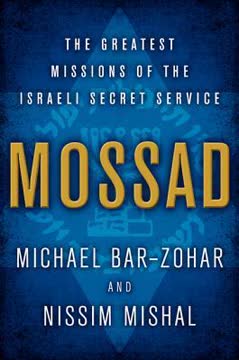
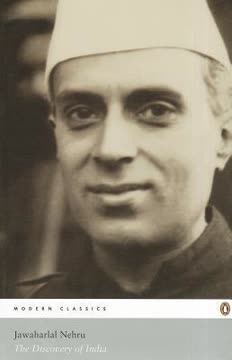
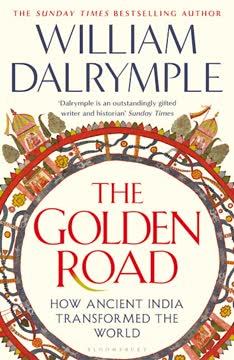
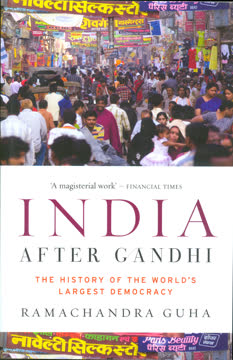
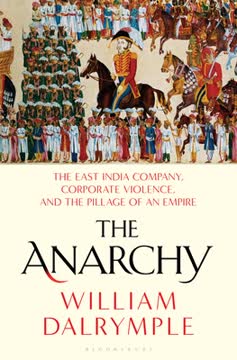
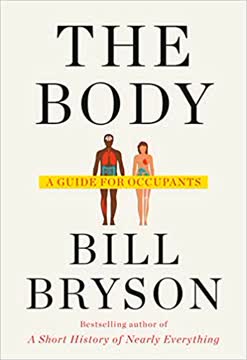
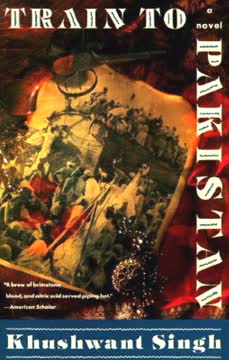
Download PDF
Download EPUB
.epub digital book format is ideal for reading ebooks on phones, tablets, and e-readers.
